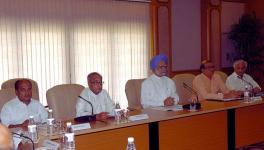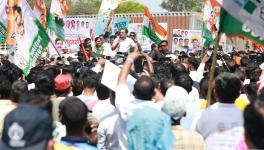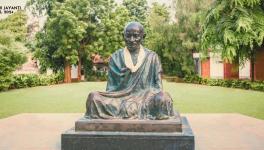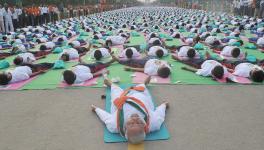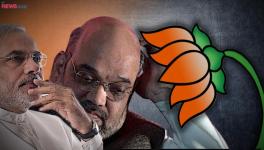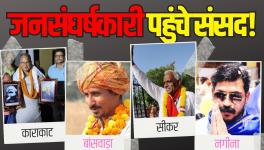When Gandhi Visited Ayodhya and a Rama Temple in 1921
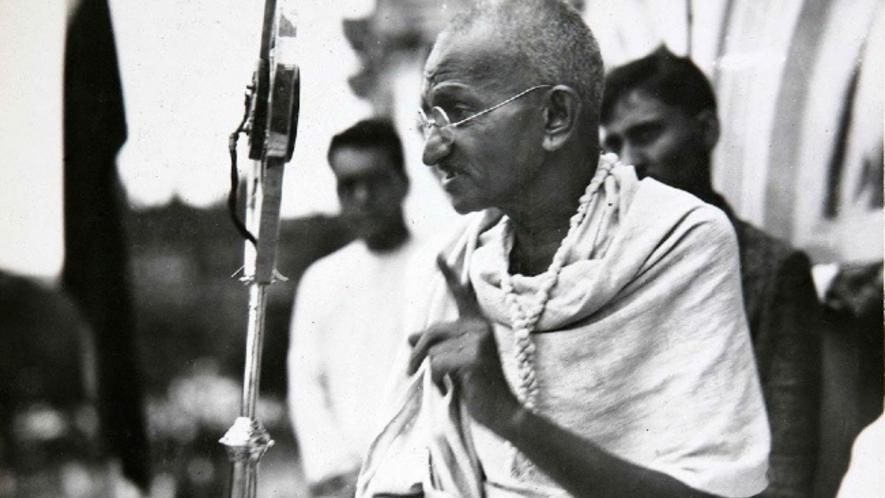
Image Courtesy: AP/PTI Photo
Most people would find it incredible to hear that Mahatma Gandhi visited a temple dedicated to Lord Rama in Ayodhya, Uttar Pradesh, over a hundred years ago. He visited the site in 1921, 27 years before his tragic assassination. His article published on 20 March the same year in his journal, Navjivan, records this visit. Gandhi wrote, “When I arrived in Ayodhya, I was taken to a small temple that stands at the place where Shri Ramachandra is believed to have been born.”
In 2024, a temple is being consecrated at the site where the Babri masjid once stood amidst a media blitzkrieg and religious frenzy, quite unusual for a sacred event. It is completely contradictory to Gandhi’s profoundly spiritual outlook, which remained unshaken to the end. We must especially recall today that he died uttering ‘Hey Rama’ on 30 January 1948 to three bullets fired by a Hindu fanatic.
Gandhi Advocated Swadeshi for Deities
A defining aspect of Gandhi’s Non-Cooperation Movement against British rule was the boycott of foreign/British garments in favour of Khadi and homespun. Gandhi was shocked to find the idols of Rama and Sita in Ayodhya dressed, in his words, in “ugly muslin with brocades”. “The devout among non-cooperators,” Gandhi wrote, “had suggested to me that I should request the temple priest to use Khadi for dressing the images of Rama and Sita.” He added, “I did make the suggestion, of course, but it is hardly likely to have been acted upon.”
Gandhi also recalled the popular legend associated with Goswami Tulsidas, the 15th-century poet-saint, about how he vowed in a Krishna temple to bow before the deity only when Lord Krishna appeared before him in the form of Rama with a bow and arrow. Gandhi invoked the account to point out that Tulsidas’s vow was so powerfully devout that Lord Rama indeed appeared before him. He wrote that if he had the strength of Tulsidas’s devotion, he would have insisted on not bowing before deities unless the priests dressed them in Khadi. Gandhi wrote, “I wish that, just as the Muslim brethren have started using Khadi for holy occasions, the Hindus too should begin to use Khadi in the temples and for other sacred purposes.”
False Narrative to Build Rama Temple
Let us come to the mobilisation of people around the idea of building a Rama temple where the Babri masjid once stood and which was demolished on 6 December 1992 despite assurances to the contrary by the ruling Bharatiya Janata Party (BJP) leader and Uttar Pradesh chief minister Kalyan Singh to the Supreme Court.
Indeed, the Supreme Court has ruled that the demolition of the mosque was an “egregious violation of the rule of law”. It has also been upheld that there was no evidence that a temple was destroyed to build the Babri mosque. Ironically, the Supreme Court acknowledged these grave illegalities and still determined that a Rama temple would be made at the site where the crime of demolishing the mosque was committed. That is exactly what is being done today, and the inauguration of the partially-constructed temple is scheduled for 22 January.
Gandhi’s Idea of Shrine and Prayer Hall
Mahatma Gandhi would have been shattered by the massive mobilisation in the name of the Hindu faith that ended in the demolition of the Babri mosque and the legal sanction to build a temple there. Gandhi was deeply spiritual and often invoked Ram in public prayer meetings and numerous other occasions. He would have interpreted the demolition of the mosque as the destruction of the sacred and holy. He would have despaired at the unfolding spectacle and grandstanding of the rulers of India in connection with the consecration of this temple. He would never have approved of the rancour and acrimony displayed in today’s India towards the Muslim and other minority communities.
Recall that in 1930, Gandhi rejected a proposal to erect a shrine and an idol for the residents of Sabarmati Ashram to offer prayers. Gandhi argued that the open space of the Ashram constituted their prayer hall and that no enclosure or closed space was required to express faith. He said that the sky was the ceiling of such a prayer hall and the four directions—North, South, East and West—were its walls. He said that the objective of praying in such a limitless hall could aim to transcend the limits of religion, nationality and all that can foster narrowness. Gandhi’s despair would have known no bounds to hear claims, which the Prime Minister of India has echoed, that Lord Ram finally has a pucca house in Ayodhya in the form of a temple where a mosque stood.
Gandhi’s Expansive Idea of Rama
Also, recall what Gandhi said in his speech at a prayer meeting in Delhi on 4 April 1946: “My Rama, the Rama of our prayers, is not the historical Rama, the son of Dasaratha, the King of Ayodhya. He is the eternal, the unborn, the one without a Second.” While stating that he saw no reason why a Muslim should object to taking His name, he made it clear that a person pursuing the Islamic faith should not be bound to recognise God as “Rama-nama”.
Tolerance and acceptance defined Gandhi’s understanding of prayer and belief. He would not have been able to relate to the ongoing events in India, for they do not represent the ideals, history shows, Gandhi cherished. But it is those ideals for which he stopped his assassin’s bullets of hatred with his final words, “Hey Ram”.
The author served as an Officer on Special Duty to the President of India, KR Narayanan. The views are personal.
Get the latest reports & analysis with people's perspective on Protests, movements & deep analytical videos, discussions of the current affairs in your Telegram app. Subscribe to NewsClick's Telegram channel & get Real-Time updates on stories, as they get published on our website.









